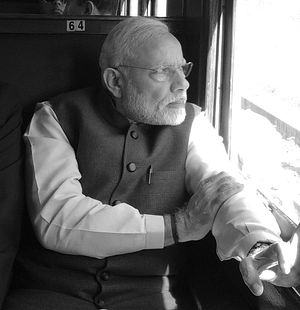Prime Minister Narendra Modi’s economic reform narrative received a boost from the recent uptick in India’s foreign direct investment (FDI) inflows. According to the United Nations Conference on Trade and Development (UNCTAD), FDI flows into India increased by nearly 30 percent over the previous year to a seven year high of $44 billion in 2015. For the same year, the Financial Times’ FDI Intelligence Unit estimates that India also led the world with $63 billion worth of announced greenfield projects – a subset of FDI where companies build new assets in the host country as opposed to acquiring existing ones. While these figures give the Indian government a reason to celebrate, they also provide an opportunity to bring India’s masses into the reform process.
A balance of payments crisis drove India’s first round of reforms in 1991, when Prime Minister PV Narasimha Rao pried open the economy to foreign trade and investment, and began dismantling India’s notoriously cumbersome regulatory system. These reforms kick-started India’s economic metamorphosis, with growth averaging nearly 7 percent over the next 25 years.
However rather than making the case for wholesale economic change, Indian politicians selectively pursued a reform agenda designed to avoid public backlash. The government knew that it could safely raise FDI caps and scrap industrial licensing without attracting the attention of the average Indian voter. Comprehensive land or labor reform, however, would directly affect people’s livelihoods. Rather than confront these more politically sensitive issues, the government left such reforms on the back burner.
How does this uneven approach to reform affect investment today? Take the example of greenfield FDI. These investments, which create productive physical assets like plants or factories, look especially promising in a country like India that desperately needs jobs for the 12 million people who enter the work force each year. However unlike a financial merger, building a factory from scratch requires land and labor — in other words, dealing precisely with those areas that remain unreformed.
Historically this has proved problematic. The 2000s witnessed much enthusiasm surrounding greenfield FDI in Indian infrastructure, particularly via the public-private partnership route (PPP). However as an aptly named 2012 article “RIPPP” in The Economist recounted, many projects stalled or incurred losses, particularly when facing issues with land acquisition. In 2013, South Korean steelmaker Posco dropped a $5.3 billion project in the state of Karnataka due to infrastructure and regulatory hurdles. Another $12 billion project remains stalled in the state of Orissa over local protests concerning land.
It’s time the Indian government recognizes that the very group it wants to shield from reform should drive it instead. Pursuing reforms that directly engage India’s rural masses will not only avoid the kinds of clashes seen in response to the Posco project, but also create a natural political base to push reform forward.
Take land for example, where reforms now belong to the states. Discussions around land reform tend to pit the interests of investors against those of farmers, and focus on easing the government’s ability to acquire land. However, laws that work toward creating efficient land markets, such as strengthening land titling and property rights, help investors and locals alike. While investors face fewer disputes in land acquisition, scores of Indians gain control over their property and the ability to buy and sell as they please. With nearly 70 percent of landholdings falling under a hectare in size, the economically vulnerable actually stand to gain the most.
Ironically China provides an example of where a bottom-up approach succeeds. China’s transformation began in 1978 with agricultural reform, loosening the impact of collectivization on peasants and establishing the basics of property rights. These changes created a popular base of support on which the Chinese government could pursue further liberalization.
If such an approach seems less feasible in a democracy, consider how Indians’ attitudes have already changed in response to economic growth.
Analysts attributed the success of Modi’s development-focused 2014 election campaign to the aspirational desires of a changing electorate. Though the Indian middle-class remains a small portion of the population by global standards — about only 6 percent earn more than $10 a day in purchasing power parity terms — a project carried out by the University of Pennsylvania’s Center for the Advanced Study of India and the Carnegie Endowment of International Peace found that 49 percent of respondents self-identified as belonging to a middle-class family. This same group displayed more positive views about the economic future, and greater belief that their household’s economic condition was improving.
In other words, the Indian government faces rising expectations to deliver on its development promises. These promises can only be realized through further reform. Voters’ ambitions provide an opening to argue for policy changes that may have been politically unviable 25 years ago. As Indian Member of Parliament BJ Panda notes, “a few years of being toppled from high GDP growth rates, not to mention the recognition that India’s desperate need to create jobs simply cannot happen without more reforms, seems to have had an effect… Politicians’ calculus about what is saleable [sic] to a transformed electorate is changing.”
The government’s touting of new investment projects shows that it recognizes this trend. Realizing that the success of these projects depends on land and labor reforms provides the ideal platform to involve the millions of Indians still relegated to the sidelines. Without their participation, India’s reform story will remain at best a partial success.
Sahana Kumar is a research assistant at the American Enterprise Institute focusing on South Asian affairs.

































